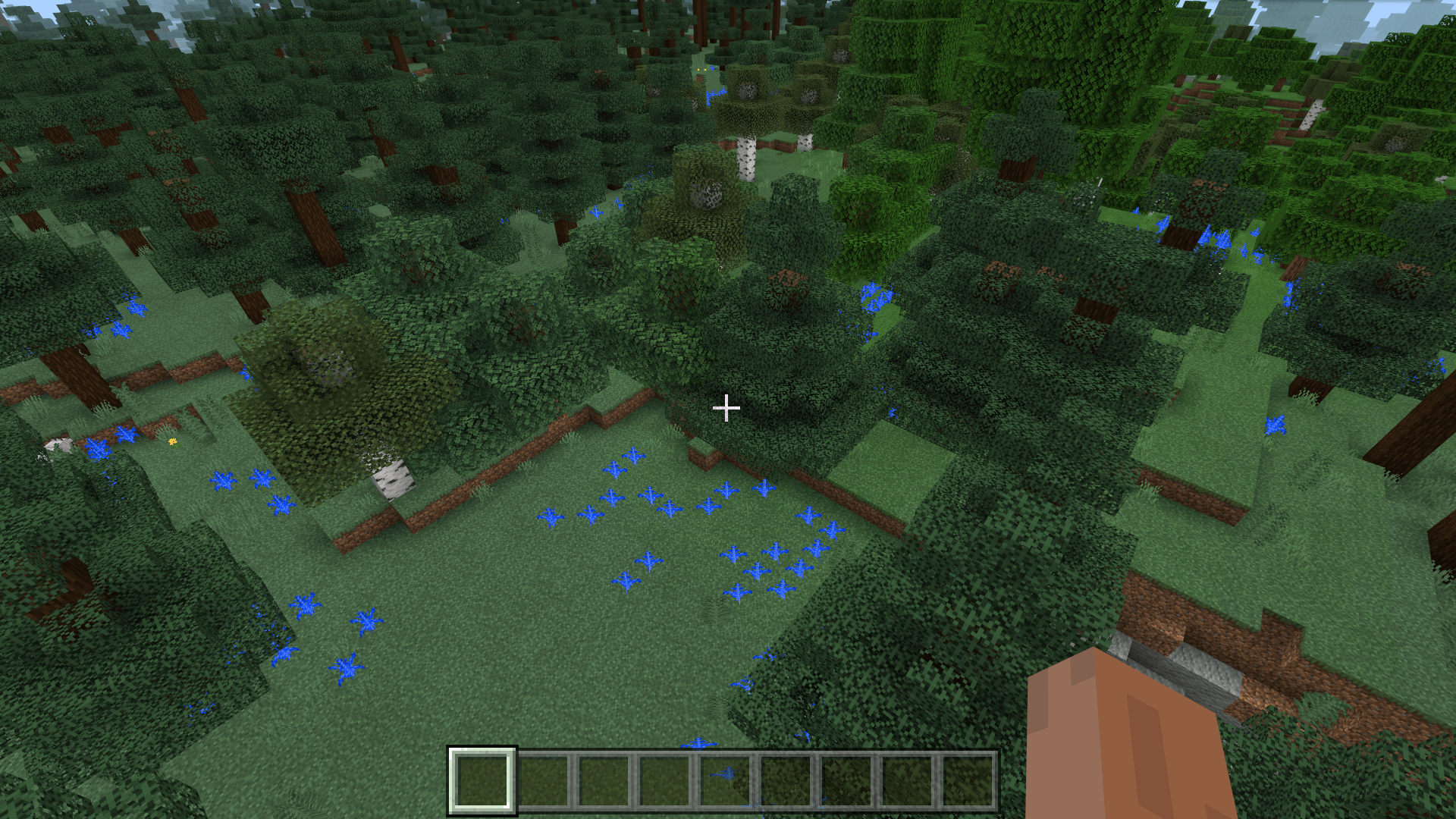# 了解自定义散植特征规则
我们继续使用上一节的蓝色蕨方块来编写散植特征。我们希望在世界中生成更多的蓝色蕨,使其形成一个簇。
# 设置蕨类散植特征
我们在特征文件夹中建立blue_fern_cluster_feature.json文件。
{
"format_version": "1.13.0",
"minecraft:scatter_feature": {
"description": {
"identifier": "tutorial_demo:blue_fern_cluster_feature"
},
"places_feature": "tutorial_demo:blue_fern_feature",
"iterations": 10,
"scatter_chance": 50.0,
"x": {
"distribution": "uniform",
"extent": [ 0, 5 ]
},
"y": 0,
"z": {
"distribution": "uniform",
"extent": [ 0, 5 ]
}
}
}
注意,在命名上我们习惯于将均匀分布的植物群体称为一个簇(Cluster),而高斯分布的植物群系称为一个斑块(Patch)。当然,对于游戏引擎本身来说,命名或许没那么重要,但是对于可读性而言,一个良好的命名还是必需的。
散植特征在放置时,只要至少一次迭代中的目标特征成功放置就会判定成功,全部迭代的目标特征全部失败就会判定失败。
# 挂接特征规则
我们在特征规则文件夹中新建overworld_blue_fern_cluster_feature.json文件。
{
"format_version": "1.13.0",
"minecraft:feature_rules": {
"description": {
"identifier": "tutorial_demo:overworld_blue_fern_cluster_feature",
"places_feature": "tutorial_demo:blue_fern_cluster_feature"
},
"conditions": {
"placement_pass": "surface_pass",
"minecraft:biome_filter": [
{
"any_of": [
{
"test": "has_biome_tag",
"operator": "==",
"value": "overworld"
},
{
"test": "has_biome_tag",
"operator": "==",
"value": "overworld_generation"
}
]
}
]
},
"distribution": {
"iterations": 5,
"x": {
"distribution": "uniform",
"extent": [ 0, 16 ]
},
"y": "query.heightmap(variable.worldx, variable.worldz)",
"z": {
"distribution": "uniform",
"extent": [ 0, 16 ]
}
}
}
}
我们迭代5次,加之以特征本身有50%的概率放置,相当于我们平均在一个区块中放置2.5个蓝色蕨簇。

可以看到,生成符合我们的预期!
https://nie.res.netease.com/r/pic/20211104/69055361-2e7a-452f-8b1a-f23e1262a03a.jpg
高级
10分钟



